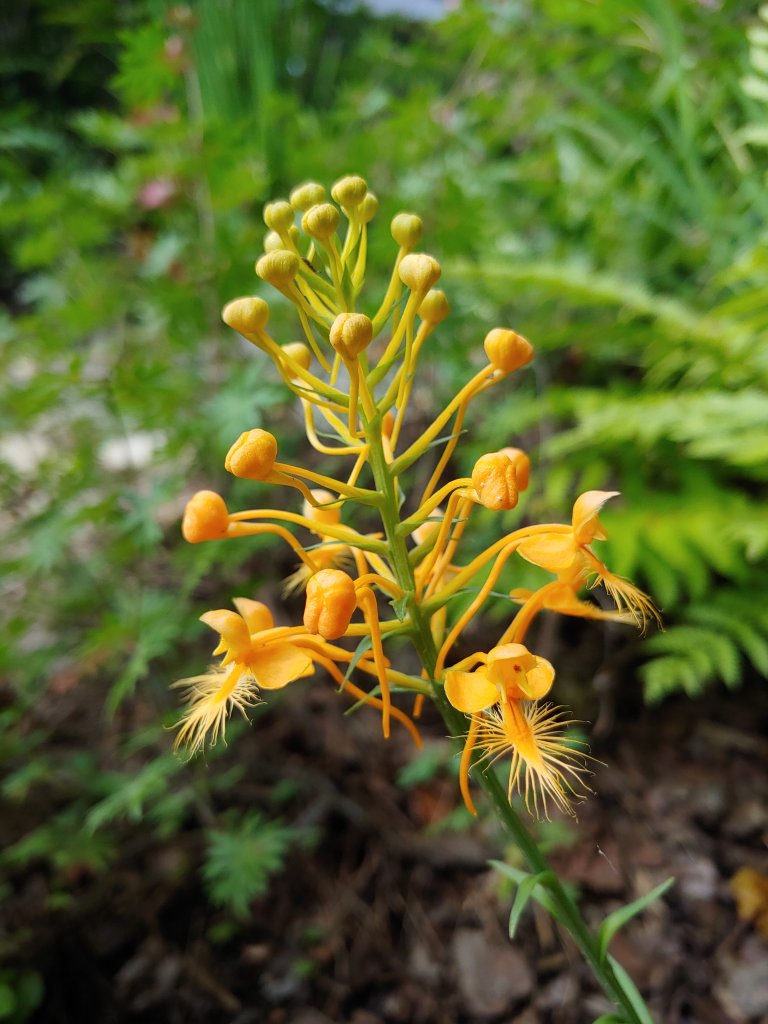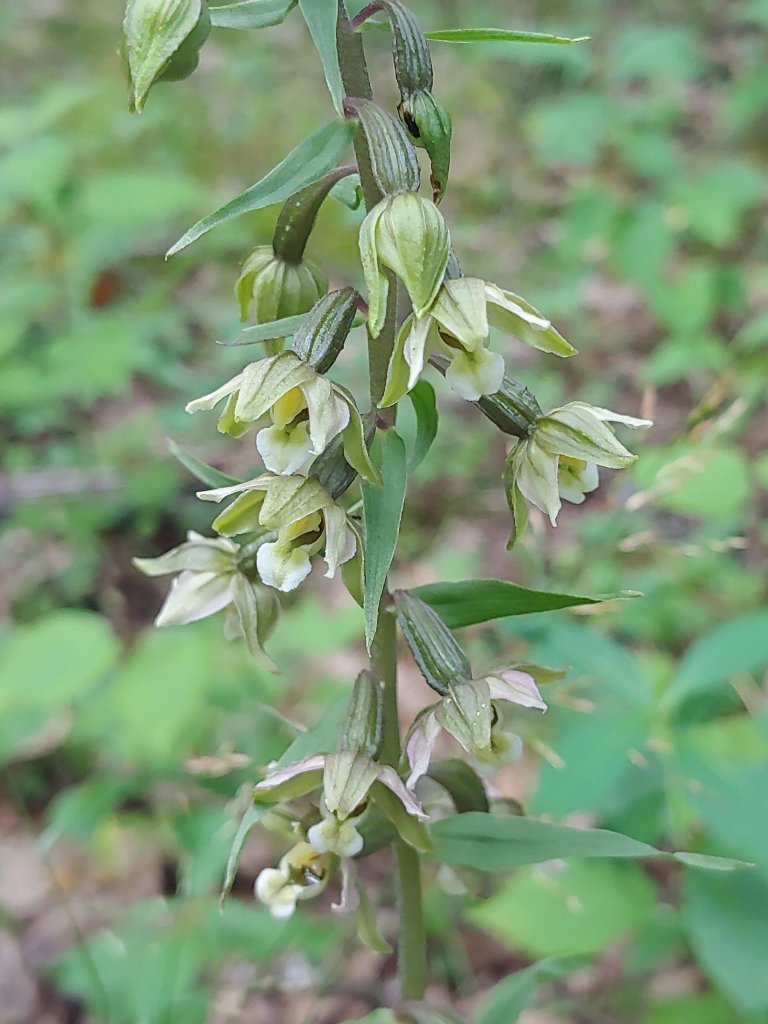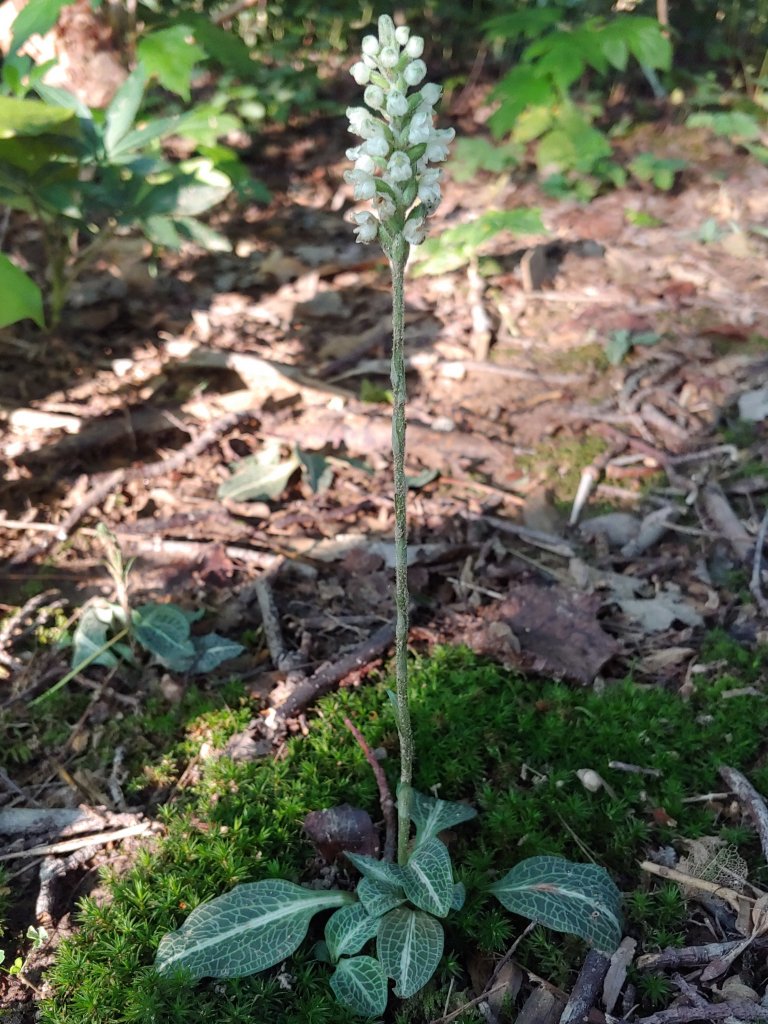Most of the garden’s terrestrial orchids are simple to spot, with prominent foliage and flowers. These are easily placed, particularly Bletilla cultivars, vigorous growers that spread readily, and with pleasant, grass-like leaves. Several orchids are flowering in early August, and though all have been given priority positioning, their small flowers and stature do not provide much of a show.

A single Yellow Fringed orchid (Platanthera ciliaris, above and below) is placed in damp, silty ground excavated to improve drainage along a stone path on the low end of the koi pond. While the soil here is not constantly wet, it rarely gets dry and often is damp. I’ve observed the orchid the past week, waiting for the bloom. Today, it does not disappoint, rivaling many tropicals in beauty, though much smaller.


Flowers of an unknown variety of Epipactis (above) lasted only a day during a July dry spell. Neglect of this sort is not unusual in this garden, but is inexcusable when it comes to orchids that are more carefully watched over.

There are a number of native orchids that I see along trails in local forests, and I’ve been fortunate to be able to establish several in the garden. Several Downy Rattlesnake plantains (Goodyera pubescens, above) are flowering in their third year in the garden. They’re treasured despite not being showy in flower or foliage.
Where’d you get the P. cilaris from? John Lonsdale?
I wish I could remember so I could get a few more. Mail order somewhere.